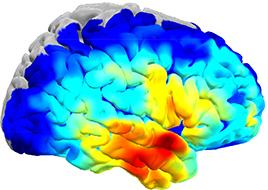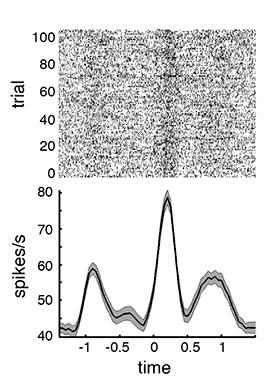
Overview
The Functional and Restorative Neurosurgery Unity is part of the Surgical Neurology Branch in the National Institute of Neurological Disorders and Stroke. Our lab exploits the unique investigative opportunities provided by intracranial electrical recordings during neurosurgical procedures. Using recordings captured from epilepsy patients implanted with subdural and depth electrodes, we investigate the activation of cortical networks during memory encoding and recall. And using recordings captured during implantation of deep brain stimulators, we investigate the role of the basal ganglia in learning and decision-making.

Human Intracranial Recordings In Epilepsy
Clinical recordings captured from intracranial subdural and depth electrodes (electrocorticography [ECoG])) are important tools in accurately defining areas of epileptic and functional cortex. Surgically resecting epileptogenic tissue relies on accurately defining these areas and offers patients the best chance of seizure freedom. In addition, because these intracranial electrodes are typically kept in place for 1 to 2 weeks, during which time patients are awake and capable of performing complex cognitive tasks, there is a distinct opportunity to collect important neurophysiologic data and to explore how those data correlate with a variety of cognitive functions.
The focus of our work has been to investigate neuronal oscillations captured by these recordings to gain insight into the neural mechanisms that underlie memory formation and recall. We are interested in mapping the distributed patterns of activity that occur across the brain when you store an item in memory. Using computational approaches, we can begin to understand where and when such activity changes, and we can map those spatiotemporal changes in activity with high precision. We are also interested in understanding how these patterns of activity reactivate when you remember an item, and how connections between different areas of the brain coordinate these changes across several regions. Because your ability to pay attention plays a large role in whether you remember something, we are also interested in how attention changes these patterns of activity. Finally, using microelectrodes to capture the activity of individual neurons, we are investigating how the activity of individual neurons relates to the changes we observe in these neuronal oscillations during memory encoding and recall.

Human Intracranial Recordings during Deep Brain Stimulation Surgery
The development of deep brain stimulation (DBS) surgery as a viable treatment for patients with movement disorders offers a unique opportunity to access the neurophysiology of the basal ganglia. Microelectrode recordings captured during surgery play an important role in clinically defining the optimal site for placement of DBS electrodes. In addition, because during this surgery patients are awake and can engage in cognitive tasks, these recordings also offer a unique opportunity to investigate the neurophysiology of the basal ganglia and its role in cognitive functions.
The focus of our work has been to investigate single neuron and oscillatory activity captured by these recordings to investigate the neural mechanisms that underlie learning and decision-making. We have found that single neuron activity in these structures changes both during feedback learning and when making difficult decisions, and are interested in exploring these questions further. We are interested in understanding how these changes in spiking activity relate to the changes we also observe in the neuronal oscillations that we record in order to understand how the brain processes this information. This includes relating the single neuron activity to oscillations in the basal ganglia, but also relating this activity to the oscillations that we observe at the cortical surface. By studying these mechanisms, we hope to gain some insight in understanding the role the basal ganglia may play in mediating these cognitive functions.
